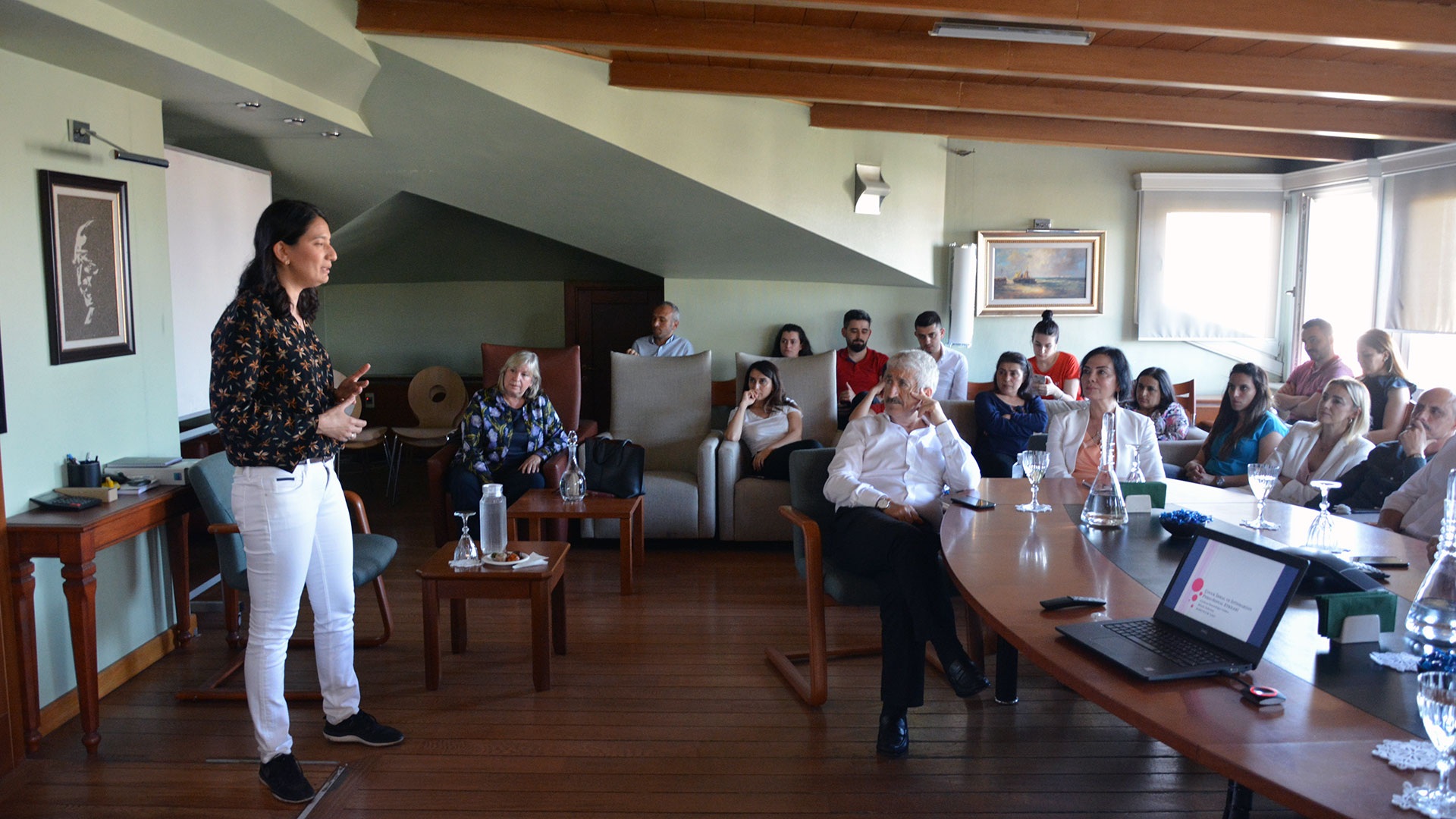Çatı Katı Seminars
The Psycho-social Effects of Child Abuse and Neglect
Görkem Demirdöğer Güller
Clinical Psychologist
KORUNCUK Foundation
- On January 26, 2017, it was revealed that a 38 day-old infant in Van was exposed to physical violence and rape, and had ultimately died.
- ‘A 14-year-old girl who was raped and forced to become a drug addict could no longer deal with depression and committed suicide at age 16.
- ‘In the Saygılı village of Andırın, Kahramanmaraş, 15-year-old Fatma Korkmaz took her own life because she had lost her virginity; it was later revealed that she had been raped by her neighbor at age 9. Taking her own life with a hunting rifle at her father’s home after being sent back on her wedding night because she “was not a virgin,” Fatma had confided in her mother about the secret she had kept for 6 years just before she committed suicide.

CHILD ABUSE AND NEGLECT
- “Child abuse and neglect involve all inappropriate or damaging actions or inactions which prevent or inhibit child development, by their parents or other caregivers.” (WHO, 1999)
- Neglect:
It is the instance in which parents or other caregivers do not meet the child’s basic needs such as food, shelter, medical care, attention, and love, and do not carry out their responsibility of caregiving.
- Emotional Abuse:
- ‘Psychological damage due to verbal abuse directed at the child.
- ‘Shouting, labeling, belittling, blaming, not showing interest, acting as though the child does not exist, threatening, being cross with them, giving offensive nicknames, shaming
- Physical Abuse:
- When adults inflict physical damage on a child's body.
- It is a form of abuse that it is seen and noticed the most.
- Scars are seen frequently on the child’s body, apart from accidents.
- It includes damaging actions such as hitting, biting, slapping, kicking, strangling, throwing, beating, and putting out cigarettes on the child’s body.
- Sexual Abuse:
- When an adult uses a child to satisfy their own sexual needs,
- When they try to have sexual intimacy with a child by using force, frightening them, threatening them, tricking them or persuading them, and experiencing sexual pleasure as a result.
- Conversing with sexual content without physical contact, indecent exposure, peeping, showing/making the child watch movies, etc with sexual content, forcing them to witness a sexual act, forming a sexual relationship with the child, touching the child by force, having the child touch them by force, rubbing against the child
- Using the child for pornographic content to publish or broadcast, forcing the child into prostitution or marriage.
SOME FACTS RELATED TO ABUSE
According to TUIK (2015) data, of all young individuals between the ages of 15-24,
- 4% have been abused physically at some point in their lives
- 5% have been sexually abused
- And 1% have been both sexually and physically abused
According to the Adverse Childhood Experiences Survey Among University Students (2016) report, conducted by Ankara University in collaboration with the World Health Organization, 8.7% of men and 7.2% of women were sexually abused as a child.
According to the Child abuse and neglect prevention data (2002), there has been a 60% rate of neglect, 20% physical abuse, 10% sexual abuse and 7% emotional abuse inflicted on children.
In the event of sexual abuse, the abuser is
- 77% likely to be family
- 11% likely to be extended family
- 5% likely to be those uninvolved in caregiving
- 2% likely to be others involved in caregiving
False
Children have vast imagination. For this reason, they make up sexual abuse.
Only children who are from low socioeconomic levels, who have run away from home, who have been neglected experience sexual abuse.
Parks, deserted streets, dark places, empty construction sites are all dangerous places and abuse occurs in such places.
Abusers are mostly strange old men who look awful.
True
Children do not lie when it comes to this subject. The first rule is to believe the child.
Children from every socio-economic level and every socio-cultural class can be exposed to sexual abuse.
Abuse generally takes place in the child’s close environment such as the home, neighborhood, school, and the route between their school and home.
Abusers are usually men between the ages of 20-40, familiar, married and with children.
HOW CAN WE NOTICE?
- Physical examination
- Developmental delay
- Behavioral changes
- Changes in emotional state
- Games
- Inappropriate behavior and information
- Direct expression
AREAS IMPACTED BY ABUSE
- developmental
- psychological
- academic
- interpersonal
- social
LONG-TERM RESULTS
- Feeling of betrayal: Abusing the child’s trust, the abuser causes the child to experience feelings of betrayal and for this feeling to be instilled in them.
- Weakness: When a child is used with sexual purposes outside their will or consent, when they are unable to prevent this, they may feel helpless and weak.
- Labeling: Connected with abuse, feelings such as shame, guilt and being a bad person, settle into the child’s sense of self and they start perceiving themselves in this way.
RISKY BEHAVIOR
- Alcoholism, substance abuse
- Self-harm, suicide × 12
- Risky, uncontrolled sexual experiences, unhealthy relationship choices,
- Early pregnancy, early marriage
ØVictimization Again
ØCycle of Abuse
ØCriminal Involvement (Violent crimes × 2/ SA in 31% if imprisoned women)
ØPsychiatric Disorders
The physical scars of abuse will disappear in a short time, while the emotional and mental scars stay FOREVER.
CONTACT CENTERS:
- ALO 183 (Social Support Line)
- ALO 155 (Police)
- The nearest child police branch
- Gendarme Women and Children division directorship 156
- Child Monitoring Centers (ÇİM)
(0212 4041500)





